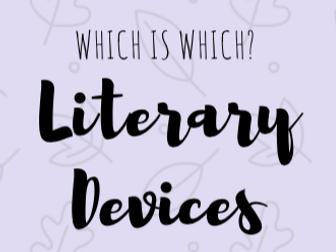Have you ever found yourself immersed in a novel or a poem, where words dance off the page and create vivid images in your mind? Writers possess a unique ability to evoke emotions and engage readers through the skillful use of literary devices.
Three such devices that add depth, humor, and intrigue to the written word are onomatopoeia, oxymoron, and satire.

In this article, we will delve into the fascinating world of these linguistic magic tricks and explore their impact on literature and communication.
Onomatopoeia, derived from the Greek words "onoma" (name) and "poiein" (to make), is a literary device that mimics or imitates sounds. It brings words to life by creating a direct connection between language and the sounds they represent.
From "buzz" to "splash," "sizzle" to "meow," onomatopoeic words enable readers to experience auditory sensations through text. Writers utilize onomatopoeia to add realism, enhance imagery, and create a multisensory experience for their audience. By interweaving these sound words into their narratives, authors paint a vibrant and immersive world for readers to explore.
Oxymoron is a literary device that combines two contradictory terms to create a paradoxical phrase. It is a harmonious clash of opposites that generates intrigue and provokes thought. Examples such as "bittersweet," "living dead," and "dark light" demonstrate the power of oxymorons in capturing the complexities of human experiences and emotions.
By juxtaposing contradictory elements, writers spark intellectual curiosity and challenge conventional thinking. Oxymorons serve as rhetorical tools, allowing authors to convey layered meanings and evoke a range of emotions, from humor to irony to profound reflection.
Satire is a form of writing that employs humor, irony, and ridicule to expose and criticize human vices, follies, and societal issues. Through satire, writers employ a subtle blend of humor and social commentary to provoke thought and bring about change. It serves as a tool to question norms, challenge authority, and highlight hypocrisy.
From Jonathan Swift's "A Modest Proposal" to George Orwell's "Animal Farm," satirical works have stood the test of time, inviting readers to reflect on the flaws and absurdities of the world they inhabit. Satire encourages introspection, sparks conversation, and encourages readers to question the status quo.
As writers harness the power of onomatopoeia, oxymoron, and satire, they unlock a world of possibilities for creating captivating and thought-provoking works. These literary devices provide tools to engage readers on multiple levels, whether it's through the sensory appeal of onomatopoeia, the paradoxical intrigue of oxymorons, or the biting wit of satire.
By skillfully employing onomatopoeia, writers infuse their narratives with vibrant sounds that transport readers into the heart of the story.
With the help of oxymorons, they navigate the realm of contradictions, unraveling complex emotions and challenging readers' perspectives. And through satire, writers shed light on societal shortcomings, igniting conversations that lead to progress and change.
In conclusion, the mastery of onomatopoeia, the embrace of oxymorons, and the art of satire are essential tools in a writer's arsenal.
These linguistic magic tricks enrich literature, captivate readers, and facilitate meaningful communication. So, whether you're a writer looking to add depth to your work or a reader seeking to explore the nuances of language, embrace these devices and embark on a journey of linguistic exploration.
To learn more about onomatopoeia, oxymoron, and satire, visit 5staressays.com, where you can find a wealth of resources and professional write my essay assistance, including essay writing services, to help you refine your skills and master the art of effective communication.